Unlocking your future through trade school can be a transformative step toward a rewarding career. Unlike traditional four-year colleges, trade schools focus on practical skills and quick entry into the workforce, often requiring only a placement test and a minimum GPA of 2.0. This guide will explore essential admission requirements, helping you navigate the path to a successful trade education.
1. Basic Admission Requirements Overview
Trade schools primarily require applicants to possess a high school diploma or GED certificate for admission. If a diploma is unavailable, obtaining a GED serves as an acceptable alternative. Verification of high school graduation is typically necessary, which may include submitting a transcript or diploma. In cases where transcripts are not accessible, a letter from the school may suffice to confirm educational status.
While some trade schools may accept students without a high school diploma or GED, they often require a placement test. Additional documents like essays or recommendation letters can enhance an applicant’s profile, although they are not always mandatory. It’s important to note that lacking a high school diploma or GED may limit financial aid opportunities, and certain states mandate these credentials for licensing in specific trades.
2. Educational Background and GPA Standards
Trade schools generally have more flexible GPA requirements for admission compared to traditional colleges. Many institutions set a minimum GPA of around 2.0, making it accessible for a wider range of applicants. Those who fall short of this standard can often reach out to school counselors for alternative admission pathways.
A high school diploma or GED is typically required for trade school enrollment, ensuring that students possess a foundational level of education. A GED is recognized as equivalent to a high school diploma, allowing those who did not complete high school to still pursue vocational training. Verification of graduation status often involves submitting a transcript or diploma.
While some trade schools may accept students without a high school diploma or GED, they might require a placement test to evaluate the applicant’s general knowledge. This approach helps ensure that students are adequately prepared for the coursework ahead. Additionally, while essays and transcripts are not always mandatory, they can significantly enhance an applicant’s chances of acceptance.
It’s important to note that lacking a high school diploma or GED can limit financial aid opportunities for students. In some states, a diploma or GED is necessary for licensing in specific trades, even if the trade school itself does not impose this requirement. Programs like Ability to Benefit (ATB) can provide financial aid to those without a diploma under certain conditions, broadening access to vocational education.
3. High School Diploma or GED Necessity
Many trade schools require applicants to possess a high school diploma or GED certificate for admission. A GED is recognized as equivalent to a high school diploma, ensuring that students have met essential educational standards. Verification of graduation typically involves submitting a transcript or a copy of the diploma, which helps schools assess the applicant’s background.
In some cases, trade schools may accept students without a high school diploma or GED, but they often require a placement test to evaluate general knowledge. While essays or transcripts are not mandatory, they can enhance an applicant’s chances of admission. Additionally, recommendation letters from supervisors can further strengthen an applicant’s profile, showcasing their skills and work ethic.
Lacking a high school diploma or GED can limit access to financial aid opportunities, such as federal student loans and scholarships. Some states mandate a high school diploma or GED for licensing in specific trades, regardless of the trade school’s admission policies. Programs like Ability to Benefit (ATB) allow students without a diploma to receive financial aid under certain conditions, while community colleges may offer trade programs alongside GED pursuits.
4. Placement Tests and Alternative Options
Trade schools often require placement tests for applicants lacking a high school diploma or GED to evaluate their general knowledge. While essays or transcripts are not mandatory, they can enhance an applicant’s profile by providing additional context. Recommendation letters from supervisors can further strengthen an application, showcasing the candidate’s suitability for the program.
Without a high school diploma or GED, students may face limited financial aid options, including federal loans and scholarships. Some states mandate a diploma for licensing, even if the trade school does not. The Ability to Benefit program offers financial aid to those without a diploma, contingent on passing a proficiency test or earning credits toward a degree. Community colleges may also allow students to enroll in trade programs while pursuing their GED.
5. Importance of Recommendation Letters
Recommendation letters from supervisors play a crucial role in highlighting an applicant’s suitability for a trade school and specific program. They offer valuable insights into the applicant’s background, skills, and dedication to their chosen trade, reinforcing their commitment and enhancing their overall application.
6. Age and Parental Consent Guidelines
Trade schools generally set a minimum age requirement of 17 years for applicants. This ensures that students are mature enough to handle the rigors of vocational training. However, for those younger than 17, parental consent becomes essential for enrollment, allowing families to support their educational choices.
In some cases, candidates who are 16 and a half years old may also be eligible to apply. To do so, they must provide a release letter from their high school, indicating that they have permission to pursue trade education. This flexibility helps accommodate younger students eager to start their careers early.
- Minimum age for trade school applicants is typically 17 years.
- Parental consent is required for applicants under 17.
- Candidates aged 16 and a half can apply with a release letter.
- High school release letters facilitate early enrollment.
- Parental involvement is crucial in the application process.
7. Accreditation and School Reputation
Accreditation plays a crucial role in determining the reputation of trade schools, as it signifies a commitment to quality education and adherence to industry standards. Graduating from an accredited institution not only enhances a student’s credibility but also increases their attractiveness to potential employers, who often prioritize candidates from recognized programs.
Moreover, attending an accredited trade school opens doors to financial aid opportunities, including federal student loans, making education more accessible. Most trade schools achieve accreditation through regional bodies, such as the Southern Association of Colleges and Schools Commission on Colleges, ensuring that their programs meet rigorous educational criteria. A career diploma from an accredited school is typically viewed more favorably in the job market, further solidifying the importance of accreditation.
8. Financial Aid and Funding Opportunities
Financial aid and funding opportunities for trade schools can be limited compared to traditional colleges, particularly for students without a high school diploma or GED. However, programs like the Ability to Benefit (ATB) allow these students to access federal financial aid, including Pell Grants, by passing a proficiency test or earning credits. Completing the FAFSA is essential for determining eligibility, and attending accredited trade schools can provide access to federal loans, making the average $33,000 cost of trade programs more manageable.
In conclusion, trade schools present an efficient and practical route for individuals eager to enter the workforce swiftly while acquiring specialized skills. Although admission requirements are typically less rigorous than those of traditional colleges, prospective students should consider essential factors like high school diplomas, financial aid, and licensing. Ultimately, trade schools offer valuable hands-on training for in-demand careers.



